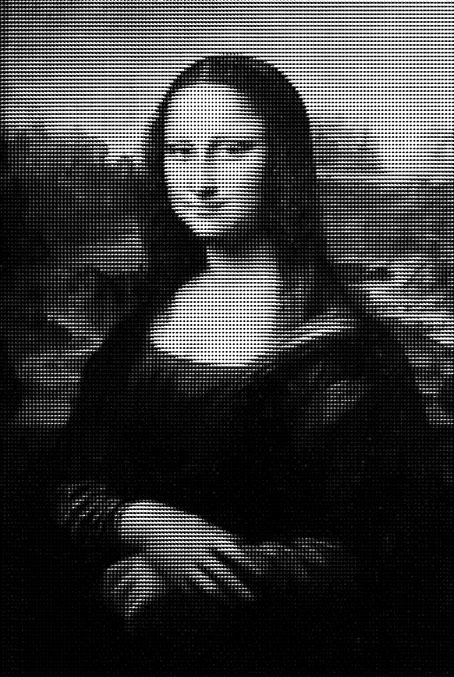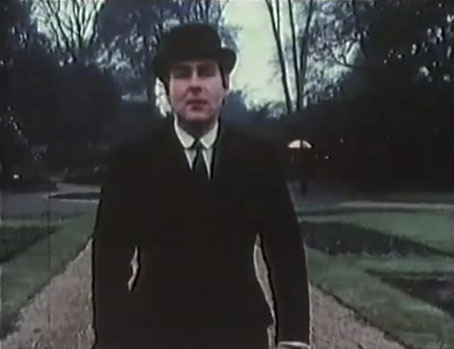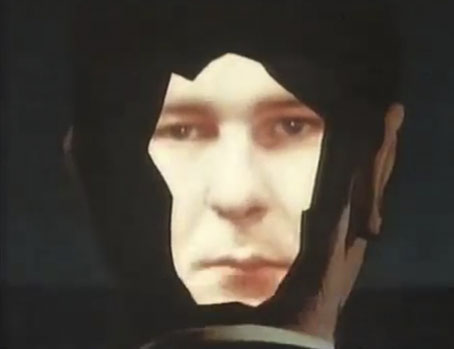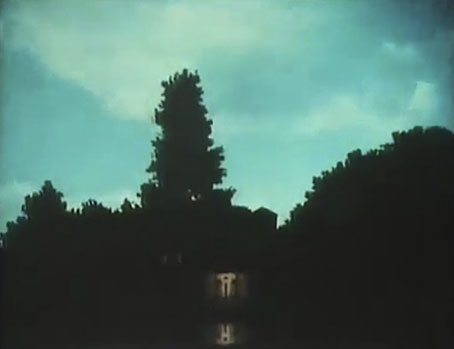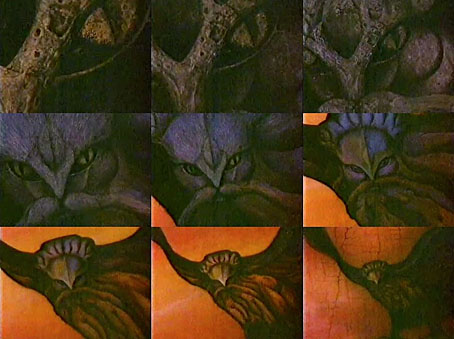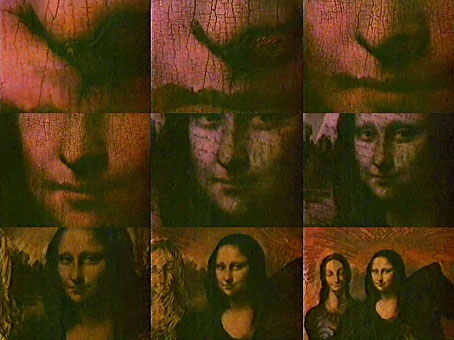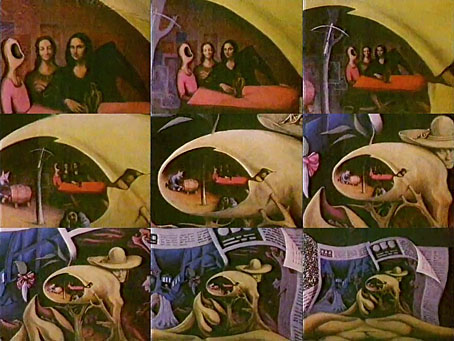“MAGIC REALISM • Like the video technique of “keying in” where any background may be electronically inserted or deleted independently of foreground, the ability to bring the actual sound of musics of various epochs and geographical origins all together in the same compositional frame marks a unique point in history. • A trumpet, branched into a chorus of trumpets by computer, traces the motifs of the Indian raga DARBARI over Senegalese drumming recorded in Paris and a background mosaic of frozen moments from an exotic Hollywood orchestration of the 1950’s [a sonic texture like a “Mona Lisa” which, in close up, reveals itself to be made up of tiny reproductions of the Taj Mahal], while the ancient call of an AKA pygmy voice in the Central African Rainforest—transposed to move in sequences of chords unheard of until the 20th century—rises and falls among gamelan-like cascades, multiplications of a single “digital snapshot” of a traditional instrument played on the Indonesian island of JAVA, on the other side of the world.” — Jon Hassell

Jon Hassell’s text is part of the sleeve note for his Aka—Darbari—Java (Magic Realism) album which was released on Editions EG in 1983. The description of a picture of the Mona Lisa made from tiny reproductions of the Taj Mahal always intrigued me even though it’s only a shorthand metaphor for the sampling process, as well as being an encapsulation in miniature of one aspect of Hassell”s “Fourth World” concept: the blending of East and West, the sacred and the profane. Nevertheless, 20 years ago—17th May, 2001, according to the date on the file—after realising that Photoshop allowed the creation of just this kind of mosaic imagery, I decided to try and bring Hassell’s metaphor to digital life.
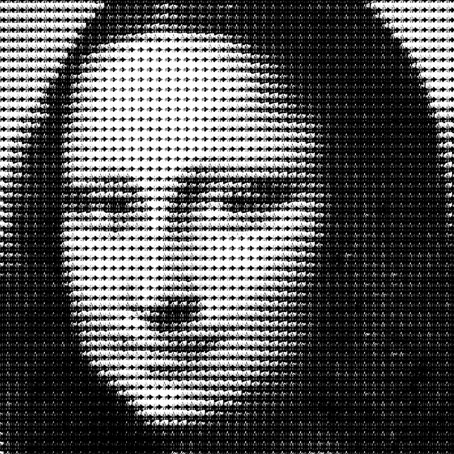
The end result in its full-size version looks at a distance like an ordinary halftone rendering of the painting but it really is made of tiny images of the Taj Mahal, albeit very rough ones since the process always resulted in a bitmap image. So much time has elapsed I’ve forgotten the procedural details although I do recall the involvement of one of those legacy features of Photoshop that most people ignore, possibly the Apply Image function. And I only did this at all because I’d found a tutorial somewhere that described how to create a mosaic image in this manner. The resulting picture wasn’t particularly satisfying but as a proof of concept it did at least work.

